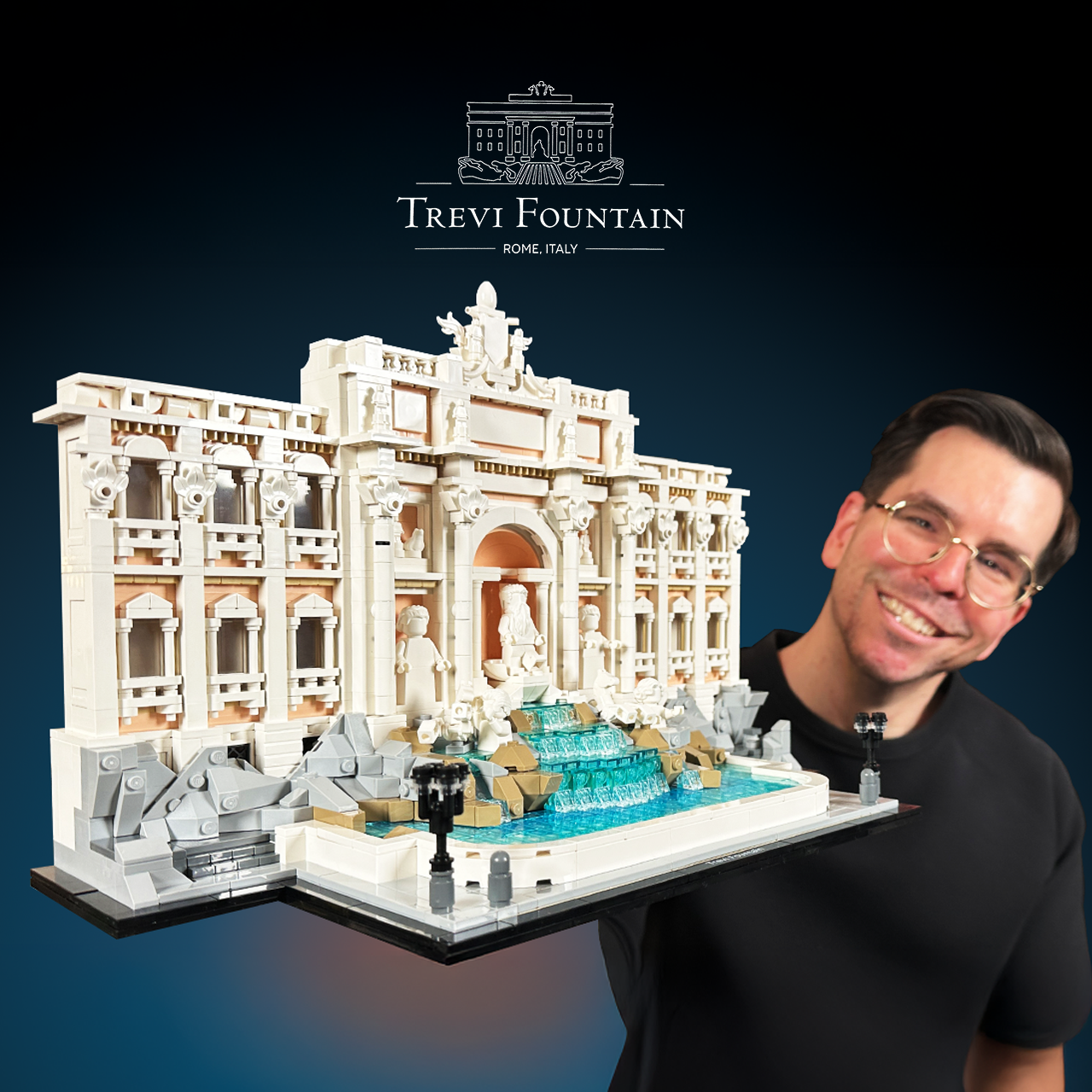The brand-new LEGO Architecture set brings an improved version of a set we first saw 10 years ago — a tribute to one of the most iconic landmarks in the world. Originally carved from travertine stone and famously featured in classic films like Federico Fellini’s La Dolce Vita, this is the LEGO Trevi Fountain.
Minifigures in LEGO Architecture
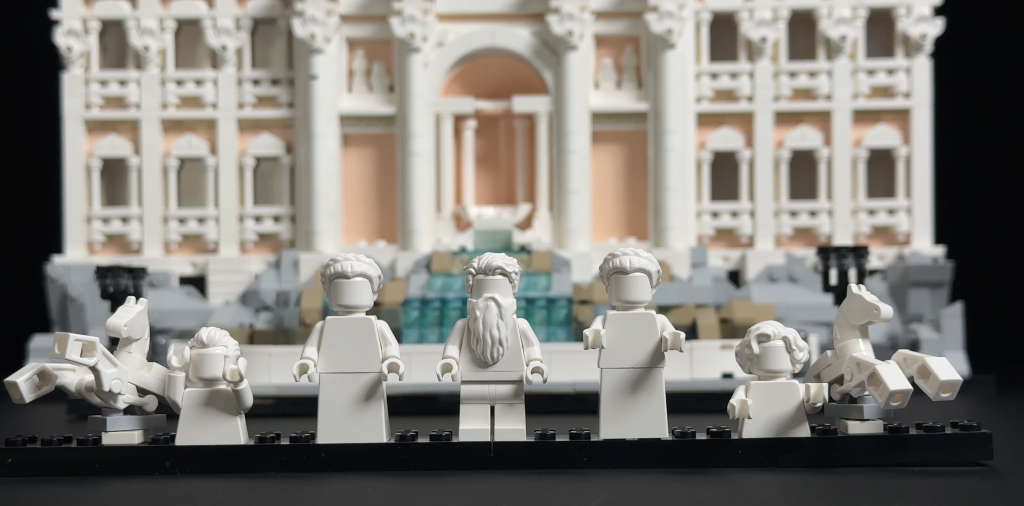
Surprisingly, this set marks a historic first — it’s the first-ever LEGO Architecture set to include minifigures.
There are a total of three full-body minifigures and two half minifigures, along with two tritons, all designed in plain white with no facial features to resemble timeless statues.
- Two half minifigures and two tritons represent hippocamps, mythical sea creatures that are half-human, half-fish — one male and one female.
- Two identical female minifigures represent Roman goddesses:
- Abundantia, the goddess of abundance
- Salubrity (Salus), the goddess of health
- Finally, Oceanus, sometimes referred to as Neptune, is the god of the seas. This older, bearded minifigure brings a regal presence to the fountain.
Set Details and Design
At the base of the model, you’ll find a printed plaque with the set name — Trevi Fountain. On either side, lampposts and bollards add a touch of urban character.
Historical Inspiration
The real Trevi Fountain, designed by Nicola Salvi, took 30 years to complete. Reflecting the Baroque architectural style, this LEGO version captures the intricate carvings and rich decorative details typical of the period.
Symmetry and Natural Elements
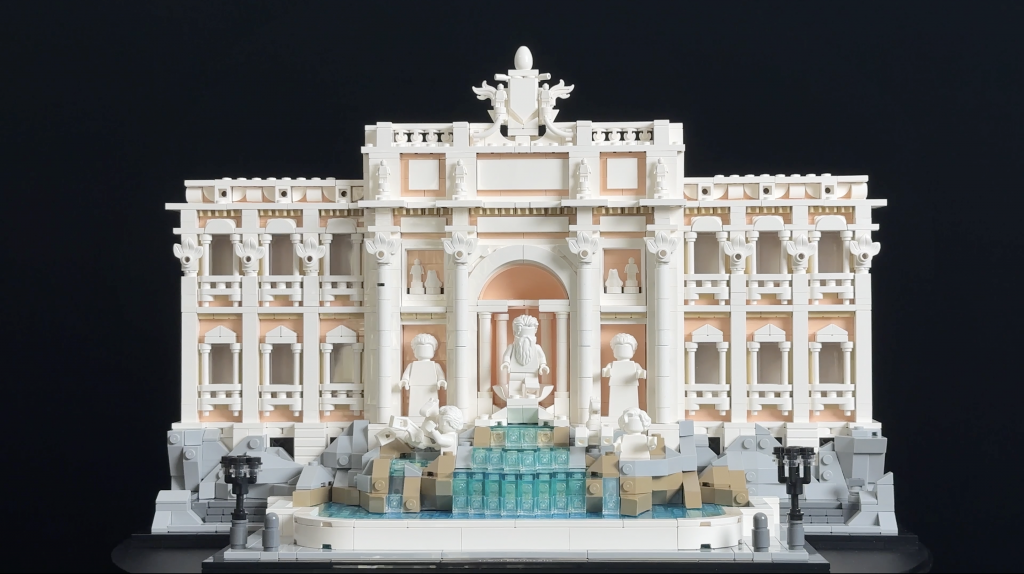
The left and right sides of the building are identical, making the building process symmetrical — you build a mirror version of one side for the other.
The only break in this symmetry comes from the rock formations at the base, which introduce organic shapes that contrast beautifully with the ornate facade above.
The Water Element
The color choices beneath the transparent blue pieces are carefully selected to match the real-life Trevi Fountain.
- In the upper sections, the water flows thinly over rocks, allowing the stone to show through.
- In the main pool, the water deepens in color, adding a sense of depth.
Hidden Coins
A beloved Trevi Fountain tradition is tossing coins into the water. Although there are no visible coins in the completed model, LEGO hides two coins inside the structure itself, a playful nod to this custom.
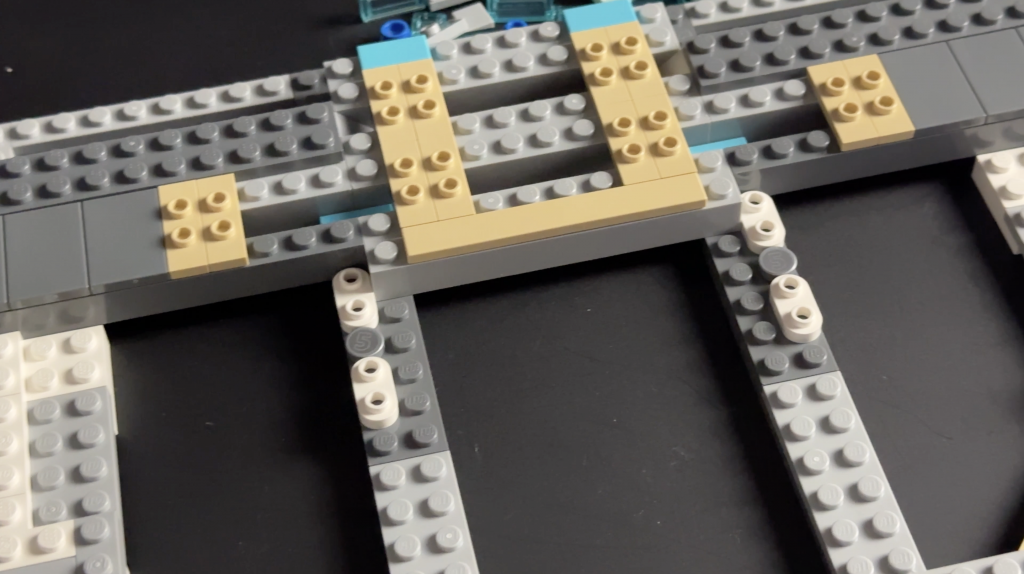
The legend goes:
- Toss one coin for a return to Rome.
- Toss two coins to fall in love with someone you meet there.
- Toss three coins for lasting romance.
Interestingly, LEGO also includes a third spare coin, so you can decide how many to “toss.”
Authentic Details
Behind the rock formations, you’ll spot windows tucked into the facade. In reality, these windows lead to the water channels that feed the cascading waterfalls.
On the right side, there’s also a small secondary fountain — the Fontanella degli Innamorati (Lovers’ Fountain).
Architectural Features
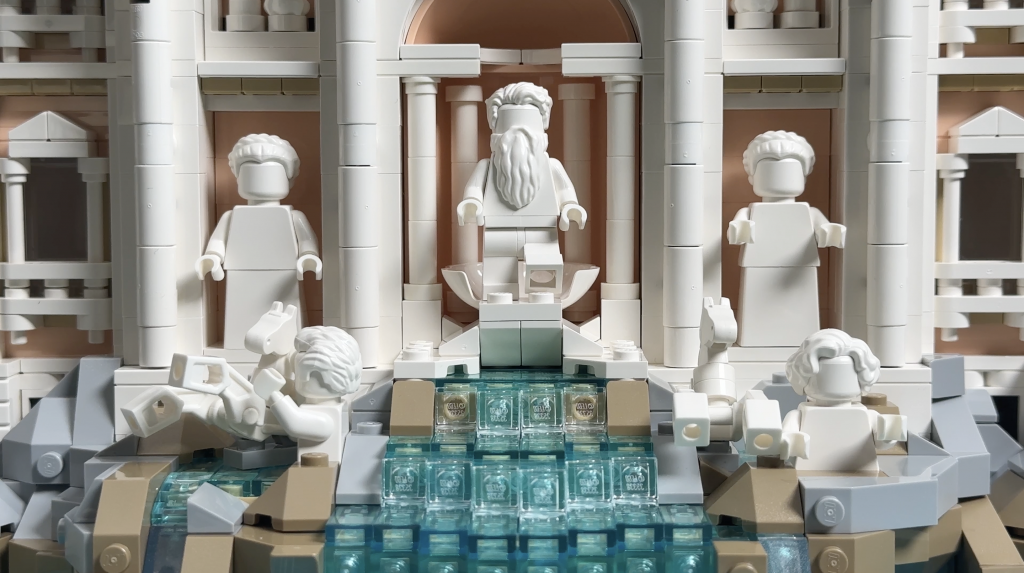
The facade is divided into nine vertical sections, centering the design perfectly — an impressive feat given how difficult centering odd numbers can be in LEGO building. Clever jumper plates help center the main archway.
At the center stands Neptune, riding his shell-shaped chariot, flanked by the two Roman goddesses from earlier.
Historical Inaccuracy
One small discrepancy is worth noting. In the real fountain, the farthest right “window” is actually a painted wall designed to mimic a window. In this LEGO version, it’s built as a window, a creative decision that slightly deviates from reality.
Decorative Elements
At the tops of the Corinthian columns, LEGO uses leaf elements to represent the capitals. While a creative attempt, this doesn’t perfectly capture the look of traditional Corinthian capitals.
Symbolism and Statues
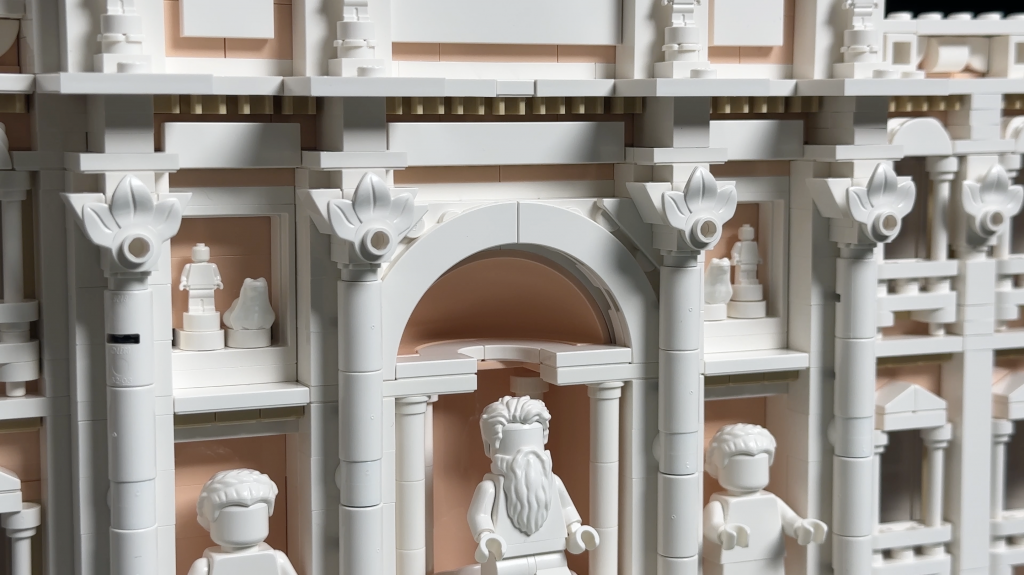
Above the female minifigures, you’ll find:
- A minifigure trophy and a frog, representing The Virgin and Agrippa, a Roman general and architect.
Above these, tan plate holders represent cornices, with the color shift capturing the weathered appearance of the real stonework.
The Four Seasons
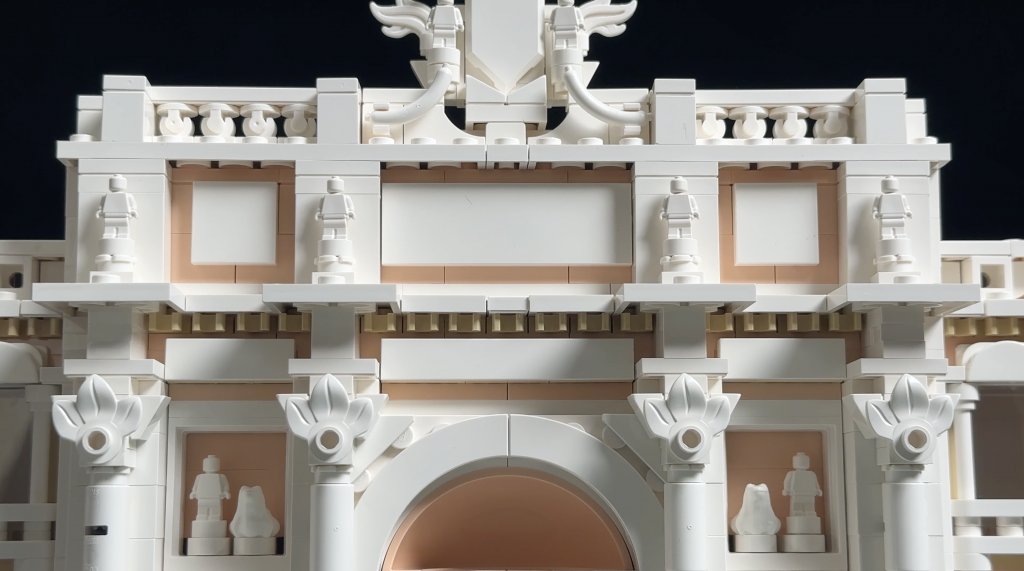
Further up, there are four minifigure trophies, representing the Four Seasons. Behind them, ornamental balustrades use clips and bars, a technique that works surprisingly well at this scale.
At the very top, you’ll find the coat of arms of Pope Clemens XII, who commissioned the original fountain.
The Back of the Set
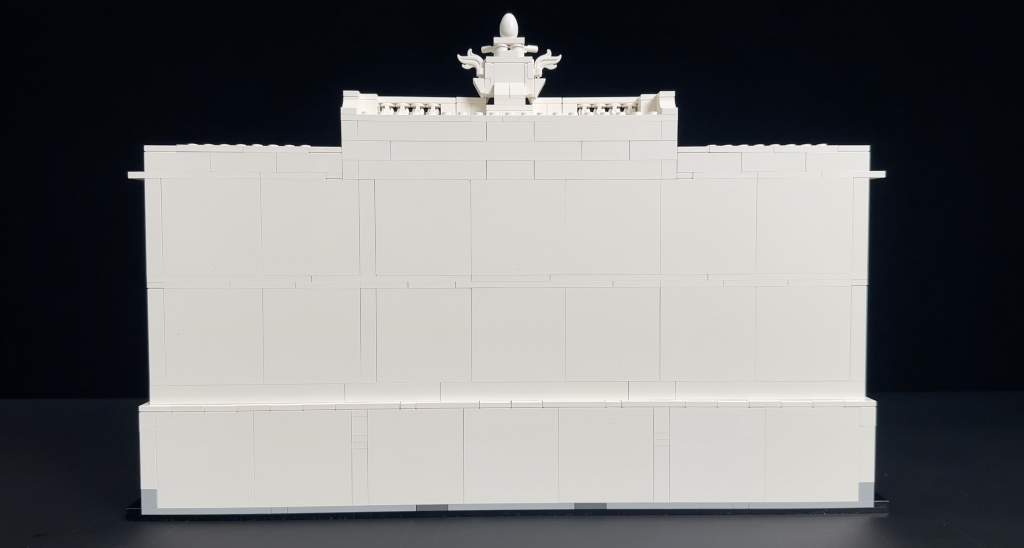
The rear of the set is a plain white wall, which may seem underwhelming at first. However, this is actually quite accurate — the Trevi Fountain is the facade of the Palazzo Poli, with the Palazzo itself built in a simpler architectural style to blend with its surroundings.
The back wall is constructed using large panel elements, making it easy to incorporate the fountain into a LEGO city layout.
Scale and Missing Details
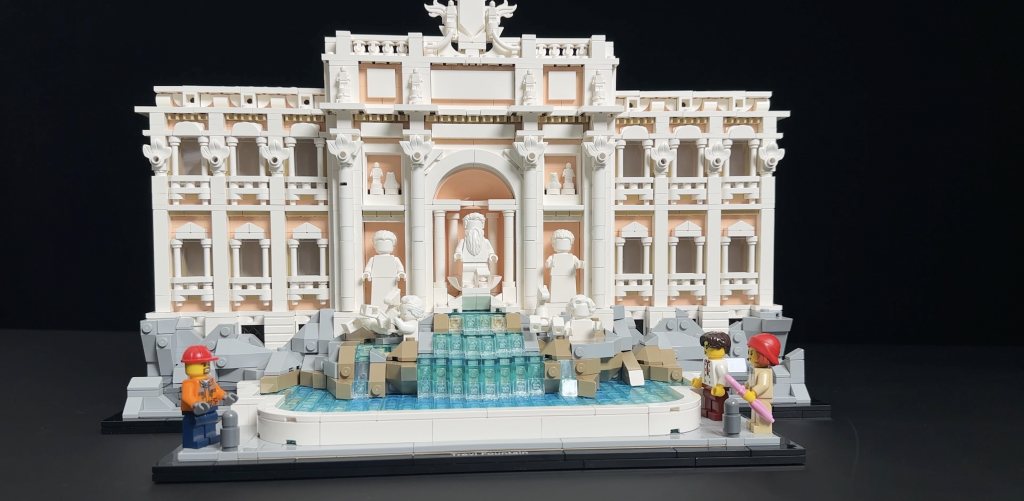
The set’s scale falls somewhere between minifigure scale and micro scale, which can feel a bit awkward. The lampposts stand roughly the same height as a minifigure, but removing them makes the minifigures look more appropriately sized next to the fountain.
Another omission is the lack of carved inscriptions found on the real Trevi Fountain. In reality, several Latin inscriptions are carved into the facade, but LEGO left these out, opting for plain white tiles instead. Even stickers could have added more authenticity.
Set Information
- Price: $160 / €160 / £140
- Piece Count: 1,880 pieces
- Minifigures: 3 full minifigures and 2 tritons
The set also includes a single instruction manual, filled with fascinating facts about the Trevi Fountain — many of which were highlighted throughout this post.
Building Experience
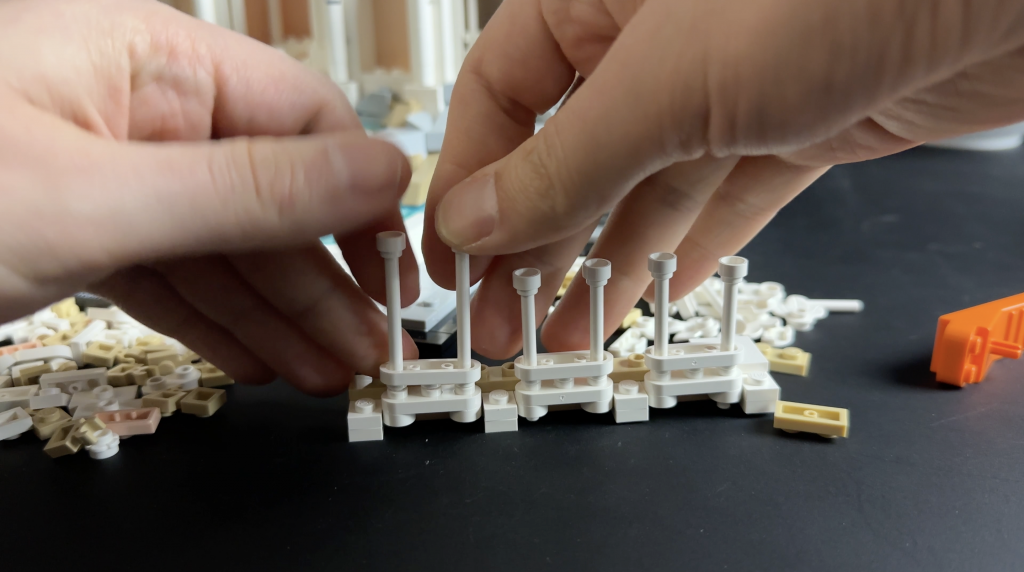
The building process offers a mix of clever techniques and faster sections. One particularly enjoyable aspect was the window construction, which used a unique technique rarely seen in LEGO sets.
Overall, building time was around three hours, which felt appropriate for a set of this size.
Final Thoughts
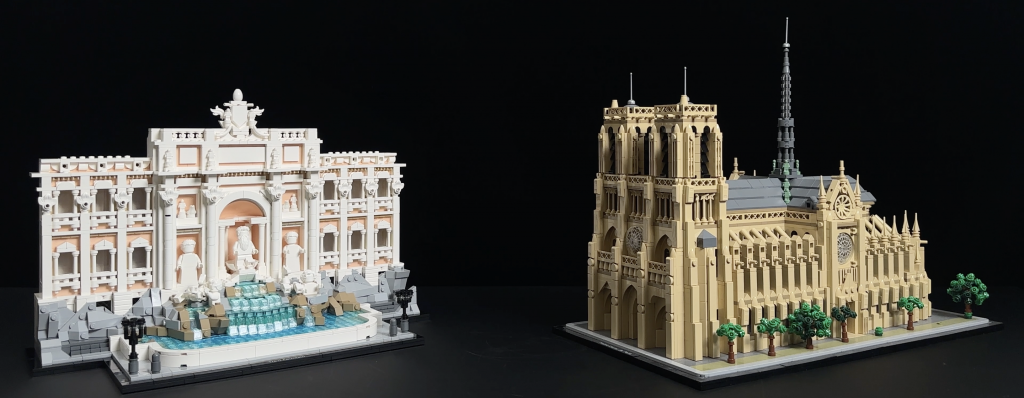
Compared to other LEGO Architecture sets, the Trevi Fountain isn’t necessarily the ultimate favorite — for some, Notre-Dame may still hold that title — but it’s a beautiful addition to any collection.
With its blend of historical accuracy, creative building techniques, and impressive minifigure integration, this set is a fantastic display piece and one that could work well within a larger LEGO city layout.
Closing Note
If you’re considering adding the Trevi Fountain to your collection, it’s available now — and if you enjoy supporting LEGO content creators, consider using affiliate links when making your purchases. It’s a simple way to help keep content like this coming.
Happy building!
Support my work by purchasing your LEGO sets using my affiliate links (Lego.com) or amazon.com.

